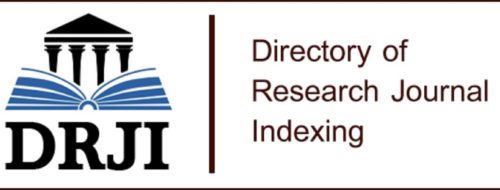Öz
In this paper, inductive causal inference patterns among foreign portfolio investment, economic growth, and several other economic, social and institutional factors are constructed. In doing so, we attempt to shed light on both the direct and indirect causation between these variables, and also distinguish between different causal patterns for developed and developing countries. To do so, using the data from the calendar year 2016, cross section of 33 developing and 23 developed countries is examined. Resulting Directed Acyclic Graphs (DAGs) reveal that economic growth follows foreign portfolio investment in developed countries, whereas there is an ambiguous relationship between economic growth and foreign portfolio investment through financial development in developing economies.
Anahtar Kelimeler
Portfolio Investment Economic Growth Directed Acyclic Graphs
Kaynakça
- ALFARO, Laura; Areendam CHANDA; Sebnem KALEMLI-OZCAN and Selin SAYEK; (2004), “FDI and Economic Growth: The Role of Local Financial Markets”, Journal of International Economics, 64(1), pp. 89-112.
- ALFARO, Laura; Areendam CHANDA; Sebnem KALEMLI-OZCAN and Selin SAYEK; (2006), “How Does Foreign Direct Investment Promote Economic Growth? Exploring the Effects of Financial Markets on Linkages”, NBER Working Paper No. 12522.
- AZMAN-SAINI, W. N. W.; Ahmad Zubaidi BAHARUMSHAH and Siong Hook LAW; (2010), “Foreign Direct Investment, Economic Freedom and Economic Growth: International Evidence”, Economic Modelling, 27(5), pp. 1079-1089.
- AIZENMAN, Joshua; Yothin JINJARAK and Donghyun PARK; (2011), “Capital Flows and Economic Growth in the Era of Financial Integration and Crisis, 1990-2010”, NBER Working paper No. 17502.
- BENGOA, Marta and Blanca SANCHEZ-ROBLES; (2003), “Foreign Direct Investment, Economic Freedom and Growth: New Evidence from Latin America”, European Journal of Political Economy, 19, pp. 529-545.
- BALASUBRAMANYAM, Vudayigiri N.; M SALISU and David SAPSFORD; (1996), “Foreign Direct Investment and Growth in EP and IS Countries”, The Economic Journal, 106(434), pp. 92-105.
- BASU, Parantap; Chandana CHAKRABORTY and Derrick REAGLE; (2003), “Liberalization, FDI, and Growth in Developing Countries: A Panel Cointegratin Approach”, Economic Inquiry, 41(3), pp. 510-516.
- BLOMSTROM, Magnus; Robert E. LIPSEY and Mario ZEJAN; (1992), “What Explains Developing Country Growth”, NBER Working Paper No. 4132.
- BLOMSTROM, Magnus and Ari KOKKO; (2003), “The Economics of Foreign Direct Investment Incentives”, NBER Working Paper No. 9489.
- BORENSZTEIN, Eduardo; Jose De GREGORIO and Jong-Wha LEE; (1998), “How Does Foreign Direct Investment Affect Economic Growth?”, Journal of International Economics, 45, pp. 115-135.
- BUSSE, Matthias and Jose L. GROIZARD; (2008), “Foreign Direct Investment, Regulations and Growth”, The World Economy, 31(7), pp. 861–886.
- CARKOVIC, Maria and Ross LEVINE; (2002), “Does Foreign Direct Investment Accelerate Economic Growth?”, University of Minnesota Working Paper, SSRN 314924.
- CHOONG, Chee-Keong; Zulkornain YUSOP and Siong-Hook LAW; (2010), “Private Capital Flows to Developing Countries: The Role of the Domestic Financial Sector”, Journal of the Asia Pacific Economy, 15 (4), pp. 509-529.
- DEMİR, Yusuf; (2007), “Yabancı Sermaye Yatırımlarının Ekonomik Büyümeye Olan Etkisinin Türkiye Bağlamında Test Edilmesi”, Muhasebe Finansman Dergisi, Sayı 34, ss. 152-161.
- DEMIRALP, Selva and Kevin D. HOOVER; (2003), “Searching for the Causal Structure of a Vector Autoregression”, Oxford Bulletin of Economics and Statistics, 65(1), pp. 745–767.
- DURHAM, J. Benson; (2004), “Absorptive Capacity and the Effects of Foreign Direct Investment and Equity Foreign Portfolio Investment on Economic Growth”, European Economic Review, 48, pp. 285-306.
- DUTT, Amitava K.; (1997), “The Pattern of Direct Foreign Investment and Economic Growth”, World Development, 25(11), pp. 1925-1936.
- DUASA, Jarita and Salina H. KASSIM; (2009), “Foreign Portfolio Investment and Economic Growth in Malaysia”, The Pakistan Development Review, 48(2), pp. 109-123.
- EDISON, Hali J.; Michael W. KLEIN; Luca RICCI and Torsten M. SLOEK; (2002), “Capital Account Liberalization and Economic Performance: Survey and Synthesis”, NBER Working Paper No. 9100.
- EKEOCHA, Patterson C.; (2008), Modelling the Long Run Determinants of Foreign Portfolio Investment in an Emerging Market: Evidence from Nigeria. International Conference on Applied Economics - ICOAE, 289-296
- ERICSSON, Johan and Manuchehr IRANDOUST; (2000), “On the Causality between Foreign Direct Investment and Output: A Comparative Study”, The International Trade Journal, 15, pp. 1-26.
- FERREIRA, Miguel A. and Paul A. LAUX; (2009), “Portfolio Flows, Volatility and Growth”, Journal of International Money and Finance, 28(2), pp. 271-292.
- GHURA, Dhaneshwar and Michael T. HADJIMICHAEL; (1996), “Growth in Sub-Saharan Africa”, IMF Staff Papers, 43(3).
- GÖRG, Holger and David GREENAWAY; (2004), “Much Ado about Nothing? Do Domestic Firms Really Benefit from Foreign Direct Investment?”, World Bank Research Observer, 19(2), pp. 171–97.
- HAUGHTON, Dominique; Arnold KAMIS and Patrick SCHOLTEN; (2006), A Review of Three Directed Acyclic Graphs Software Packages: MIM, Tetrad, and WinMine”, The American Statistician, 60(3), pp. 272-286.
- HAVRANEK, Tomas and Zuzana IRSOVA; (2011), “Estimating Vertical Spillovers from FDI: Why Results Vary and What the True Effect Is?”, Journal of International Economics, 85(2), pp. 234-244.
- HERMES, Niels and Robert LENSINK; (2003), “Foreign Direct Investment, Financial Development and Economic Growth”, The Journal of Development Studies, 40(1), 142-163.
- JAVORCIK, Beata S.; (2004), “Does Foreign Direct Investment Increase the Productivity of Domestic firms? In Search of Spillovers through Backward Linkages”, The American Economic Review, 94(3), pp. 605-627.
- KAMACI, Ahmet ve Serkan KONYA; (2016), “Kırılgan Beşli Ülkelerinde Portföy Yatırımları ile Ekonomik Büyüme Arasındaki İlişkinin Analizi”, Bilgi Sosyal Bilimler Dergisi, (2), ss. 136-155.
- KARACA, Coşkun ve Tezcan ABASIZ; (2008), “Gelir ve Bölge Ayırımına Göre Uluslararası Sermaye Hareketlerinin Ekonomik Büyüme Üzerindeki Etkisi: Ampirik Bir Analiz”, Çukurova Üniversitesi İİBF Dergisi, 12(1), ss. 19-33.
- KWON, Dae-Heum and David A. BESSLER; (2011), “Graphical Methods, Inductive Causal Inference, and Econometrics: A Literature Review”, Computational Economics, 38(1), pp. 85-106.
- LI, Xiaoying and Xiaming LIU; (2005), “Foreign Direct Investment and Economic Growth: An Increasingly Endogenous Relationship”, World Development, 33(3), pp. 393-407.
- LI, Yarui; Joshua D. WOODARD and David J. LEATHAM; (2013), “Causality Among Foreign Direct Investment and Economic Growth: A Directed Acyclic Graph Approach”, Journal of Agricultural and Applied Economics, 45(4), pp. 617 – 637.
- LIPSEY, Robert and Fredrik SJÖHOLM; (2004), Host Country Impacts of Inward FDI: Why Such Different Answers?, EIJS Working Paper Series 192, Stockholm School of Economics, The European Institute of Japanese Studies.
- MAKKI, Shiva S. and Agapi SOMWARU; (2004), “Impact of Foreign Direct Investment and Trade on Economic Growth: Evidence from Developing Countries”, American Journal of Agricultural Economics, 86(3), pp. 795-801.
- MCLEAN, Ben and Sona SHRESTHA; (2002), “International Financial Liberalisation and Economic Growth”, Economic Research Department Reserve Bank of Australia, Research Discussion Paper, 2002-03.
- MENGISTU, Berhanu and Samuel ADAMS; (2007), “Foreign Direct Investment, Governance and Economic Development in Developing Countries”, The Journal of Social, Political and Economic Studies, 32(2), pp. 223-249.
- MORAN, Theodore H.; (1998), Foreign Direct Investment and Development: The New Policy Agenda for Developing Countries and Economies in Transition, Washington DC: Institute of International Economics Press.
- ONUORAH, Anastasia C-C. and Linus E.AKUJUOBI; (2013), “Impact of Macroeconomic Indicators on the Performance of Foreign Portfolio Investment in Nigeria”, European Journal of Business and Management, 5(2), pp. 81-90.
- PEARL, Judea; (1995), “Causal Diagrams for Empirical Research”, Biometrika, 82(4), pp. 669-688.
- PRASAD, Eswar; Kenneth ROGOFF; Shang-Jin WEI and M. Ayhan KOSE (2003), Effects of Financial Globalization on Developing Countries: Some Empirical Evidence. Mimeo, 17 March, Washington D.C.: International Monetary Fund.
- RACHDI, Houssem and Hichem SAIDI; (2011), “The Impact of Foreign Direct Investment and Portfolio Investment on Economic Growth in Developing and Developed Economies”, Interdisciplinary Journal of Research in Business, 1(6), pp. 10-17.
- SARKAR, Prabirjit; (2007), “Does Foreign Direct Investment Promote Growth? Panel Data and Time Series Evidence from Less Developing Countries”, 1970-2002. MPRA Paper no. 5176.
- SOLOMON, Edna M.; (2011), “Foreign Direct Investment, Host Country Factors and Economic Growth”, Ensayos Revista de Economía, 30(1), pp. 41-70.
- SPIRTES, Peter; Clark GLYMOUR and Richard SCHEINES; (2000), Causation, Prediction, and Search, Second Edition, Cambridge, MA: MIT Press.
- TREVINO, Len J. and Kamal P. UPADHYAYA; (2003), “Foreign Aid, FDI and Economic Growth: Evidence from Asian Countries”, Transnational Corporations, 12 (2), pp. 119-135.
- VERMA, Tom S. and Judea PEARL; (1990), “Causal Networks: Semantics and Expressiveness”, Machine Intelligence and Pattern Recognition, 9, pp. 69-76.
- VITA, Glauco de and Khine S. KYAW; (2009), “Growth Effects of FDI and Portfolio Investment Flows to Developing Countries: A Disaggregated Analysis by Income Levels”, Applied Economics Letters, 16(3), pp. 277-283.
- ZHANG, Kevin H.; (2001), “Does Foreign Direct Investment Promote Economic Growth? Evidence from East Asia and Latin America”, Contemporary Economic Policy, 19(2), pp. 175-185.
- ZHANG, Jin; David A. BESSLER and David J. LEATHAM; (2006), “Does Consumer Debt Cause Economic Recession? Evidence Using Directed Acyclic Graphs”, Applied Economics Letters, 13(7), pp. 401 – 407.
Öz
Anahtar Kelimeler
Portföy Yatırımları Ekonomik Büyüme Yönlendirilmiş Döngüsüz Graflar
Kaynakça
- ALFARO, Laura; Areendam CHANDA; Sebnem KALEMLI-OZCAN and Selin SAYEK; (2004), “FDI and Economic Growth: The Role of Local Financial Markets”, Journal of International Economics, 64(1), pp. 89-112.
- ALFARO, Laura; Areendam CHANDA; Sebnem KALEMLI-OZCAN and Selin SAYEK; (2006), “How Does Foreign Direct Investment Promote Economic Growth? Exploring the Effects of Financial Markets on Linkages”, NBER Working Paper No. 12522.
- AZMAN-SAINI, W. N. W.; Ahmad Zubaidi BAHARUMSHAH and Siong Hook LAW; (2010), “Foreign Direct Investment, Economic Freedom and Economic Growth: International Evidence”, Economic Modelling, 27(5), pp. 1079-1089.
- AIZENMAN, Joshua; Yothin JINJARAK and Donghyun PARK; (2011), “Capital Flows and Economic Growth in the Era of Financial Integration and Crisis, 1990-2010”, NBER Working paper No. 17502.
- BENGOA, Marta and Blanca SANCHEZ-ROBLES; (2003), “Foreign Direct Investment, Economic Freedom and Growth: New Evidence from Latin America”, European Journal of Political Economy, 19, pp. 529-545.
- BALASUBRAMANYAM, Vudayigiri N.; M SALISU and David SAPSFORD; (1996), “Foreign Direct Investment and Growth in EP and IS Countries”, The Economic Journal, 106(434), pp. 92-105.
- BASU, Parantap; Chandana CHAKRABORTY and Derrick REAGLE; (2003), “Liberalization, FDI, and Growth in Developing Countries: A Panel Cointegratin Approach”, Economic Inquiry, 41(3), pp. 510-516.
- BLOMSTROM, Magnus; Robert E. LIPSEY and Mario ZEJAN; (1992), “What Explains Developing Country Growth”, NBER Working Paper No. 4132.
- BLOMSTROM, Magnus and Ari KOKKO; (2003), “The Economics of Foreign Direct Investment Incentives”, NBER Working Paper No. 9489.
- BORENSZTEIN, Eduardo; Jose De GREGORIO and Jong-Wha LEE; (1998), “How Does Foreign Direct Investment Affect Economic Growth?”, Journal of International Economics, 45, pp. 115-135.
- BUSSE, Matthias and Jose L. GROIZARD; (2008), “Foreign Direct Investment, Regulations and Growth”, The World Economy, 31(7), pp. 861–886.
- CARKOVIC, Maria and Ross LEVINE; (2002), “Does Foreign Direct Investment Accelerate Economic Growth?”, University of Minnesota Working Paper, SSRN 314924.
- CHOONG, Chee-Keong; Zulkornain YUSOP and Siong-Hook LAW; (2010), “Private Capital Flows to Developing Countries: The Role of the Domestic Financial Sector”, Journal of the Asia Pacific Economy, 15 (4), pp. 509-529.
- DEMİR, Yusuf; (2007), “Yabancı Sermaye Yatırımlarının Ekonomik Büyümeye Olan Etkisinin Türkiye Bağlamında Test Edilmesi”, Muhasebe Finansman Dergisi, Sayı 34, ss. 152-161.
- DEMIRALP, Selva and Kevin D. HOOVER; (2003), “Searching for the Causal Structure of a Vector Autoregression”, Oxford Bulletin of Economics and Statistics, 65(1), pp. 745–767.
- DURHAM, J. Benson; (2004), “Absorptive Capacity and the Effects of Foreign Direct Investment and Equity Foreign Portfolio Investment on Economic Growth”, European Economic Review, 48, pp. 285-306.
- DUTT, Amitava K.; (1997), “The Pattern of Direct Foreign Investment and Economic Growth”, World Development, 25(11), pp. 1925-1936.
- DUASA, Jarita and Salina H. KASSIM; (2009), “Foreign Portfolio Investment and Economic Growth in Malaysia”, The Pakistan Development Review, 48(2), pp. 109-123.
- EDISON, Hali J.; Michael W. KLEIN; Luca RICCI and Torsten M. SLOEK; (2002), “Capital Account Liberalization and Economic Performance: Survey and Synthesis”, NBER Working Paper No. 9100.
- EKEOCHA, Patterson C.; (2008), Modelling the Long Run Determinants of Foreign Portfolio Investment in an Emerging Market: Evidence from Nigeria. International Conference on Applied Economics - ICOAE, 289-296
- ERICSSON, Johan and Manuchehr IRANDOUST; (2000), “On the Causality between Foreign Direct Investment and Output: A Comparative Study”, The International Trade Journal, 15, pp. 1-26.
- FERREIRA, Miguel A. and Paul A. LAUX; (2009), “Portfolio Flows, Volatility and Growth”, Journal of International Money and Finance, 28(2), pp. 271-292.
- GHURA, Dhaneshwar and Michael T. HADJIMICHAEL; (1996), “Growth in Sub-Saharan Africa”, IMF Staff Papers, 43(3).
- GÖRG, Holger and David GREENAWAY; (2004), “Much Ado about Nothing? Do Domestic Firms Really Benefit from Foreign Direct Investment?”, World Bank Research Observer, 19(2), pp. 171–97.
- HAUGHTON, Dominique; Arnold KAMIS and Patrick SCHOLTEN; (2006), A Review of Three Directed Acyclic Graphs Software Packages: MIM, Tetrad, and WinMine”, The American Statistician, 60(3), pp. 272-286.
- HAVRANEK, Tomas and Zuzana IRSOVA; (2011), “Estimating Vertical Spillovers from FDI: Why Results Vary and What the True Effect Is?”, Journal of International Economics, 85(2), pp. 234-244.
- HERMES, Niels and Robert LENSINK; (2003), “Foreign Direct Investment, Financial Development and Economic Growth”, The Journal of Development Studies, 40(1), 142-163.
- JAVORCIK, Beata S.; (2004), “Does Foreign Direct Investment Increase the Productivity of Domestic firms? In Search of Spillovers through Backward Linkages”, The American Economic Review, 94(3), pp. 605-627.
- KAMACI, Ahmet ve Serkan KONYA; (2016), “Kırılgan Beşli Ülkelerinde Portföy Yatırımları ile Ekonomik Büyüme Arasındaki İlişkinin Analizi”, Bilgi Sosyal Bilimler Dergisi, (2), ss. 136-155.
- KARACA, Coşkun ve Tezcan ABASIZ; (2008), “Gelir ve Bölge Ayırımına Göre Uluslararası Sermaye Hareketlerinin Ekonomik Büyüme Üzerindeki Etkisi: Ampirik Bir Analiz”, Çukurova Üniversitesi İİBF Dergisi, 12(1), ss. 19-33.
- KWON, Dae-Heum and David A. BESSLER; (2011), “Graphical Methods, Inductive Causal Inference, and Econometrics: A Literature Review”, Computational Economics, 38(1), pp. 85-106.
- LI, Xiaoying and Xiaming LIU; (2005), “Foreign Direct Investment and Economic Growth: An Increasingly Endogenous Relationship”, World Development, 33(3), pp. 393-407.
- LI, Yarui; Joshua D. WOODARD and David J. LEATHAM; (2013), “Causality Among Foreign Direct Investment and Economic Growth: A Directed Acyclic Graph Approach”, Journal of Agricultural and Applied Economics, 45(4), pp. 617 – 637.
- LIPSEY, Robert and Fredrik SJÖHOLM; (2004), Host Country Impacts of Inward FDI: Why Such Different Answers?, EIJS Working Paper Series 192, Stockholm School of Economics, The European Institute of Japanese Studies.
- MAKKI, Shiva S. and Agapi SOMWARU; (2004), “Impact of Foreign Direct Investment and Trade on Economic Growth: Evidence from Developing Countries”, American Journal of Agricultural Economics, 86(3), pp. 795-801.
- MCLEAN, Ben and Sona SHRESTHA; (2002), “International Financial Liberalisation and Economic Growth”, Economic Research Department Reserve Bank of Australia, Research Discussion Paper, 2002-03.
- MENGISTU, Berhanu and Samuel ADAMS; (2007), “Foreign Direct Investment, Governance and Economic Development in Developing Countries”, The Journal of Social, Political and Economic Studies, 32(2), pp. 223-249.
- MORAN, Theodore H.; (1998), Foreign Direct Investment and Development: The New Policy Agenda for Developing Countries and Economies in Transition, Washington DC: Institute of International Economics Press.
- ONUORAH, Anastasia C-C. and Linus E.AKUJUOBI; (2013), “Impact of Macroeconomic Indicators on the Performance of Foreign Portfolio Investment in Nigeria”, European Journal of Business and Management, 5(2), pp. 81-90.
- PEARL, Judea; (1995), “Causal Diagrams for Empirical Research”, Biometrika, 82(4), pp. 669-688.
- PRASAD, Eswar; Kenneth ROGOFF; Shang-Jin WEI and M. Ayhan KOSE (2003), Effects of Financial Globalization on Developing Countries: Some Empirical Evidence. Mimeo, 17 March, Washington D.C.: International Monetary Fund.
- RACHDI, Houssem and Hichem SAIDI; (2011), “The Impact of Foreign Direct Investment and Portfolio Investment on Economic Growth in Developing and Developed Economies”, Interdisciplinary Journal of Research in Business, 1(6), pp. 10-17.
- SARKAR, Prabirjit; (2007), “Does Foreign Direct Investment Promote Growth? Panel Data and Time Series Evidence from Less Developing Countries”, 1970-2002. MPRA Paper no. 5176.
- SOLOMON, Edna M.; (2011), “Foreign Direct Investment, Host Country Factors and Economic Growth”, Ensayos Revista de Economía, 30(1), pp. 41-70.
- SPIRTES, Peter; Clark GLYMOUR and Richard SCHEINES; (2000), Causation, Prediction, and Search, Second Edition, Cambridge, MA: MIT Press.
- TREVINO, Len J. and Kamal P. UPADHYAYA; (2003), “Foreign Aid, FDI and Economic Growth: Evidence from Asian Countries”, Transnational Corporations, 12 (2), pp. 119-135.
- VERMA, Tom S. and Judea PEARL; (1990), “Causal Networks: Semantics and Expressiveness”, Machine Intelligence and Pattern Recognition, 9, pp. 69-76.
- VITA, Glauco de and Khine S. KYAW; (2009), “Growth Effects of FDI and Portfolio Investment Flows to Developing Countries: A Disaggregated Analysis by Income Levels”, Applied Economics Letters, 16(3), pp. 277-283.
- ZHANG, Kevin H.; (2001), “Does Foreign Direct Investment Promote Economic Growth? Evidence from East Asia and Latin America”, Contemporary Economic Policy, 19(2), pp. 175-185.
- ZHANG, Jin; David A. BESSLER and David J. LEATHAM; (2006), “Does Consumer Debt Cause Economic Recession? Evidence Using Directed Acyclic Graphs”, Applied Economics Letters, 13(7), pp. 401 – 407.
Ayrıntılar
| Birincil Dil | Türkçe |
|---|---|
| Bölüm | Makaleler |
| Yazarlar | |
| Yayımlanma Tarihi | 30 Haziran 2019 |
| Kabul Tarihi | 3 Ocak 2019 |
| Yayımlandığı Sayı | Yıl 2019 Sayı: 53 |
Cited By
Borsa İstanbul’da yabancı yatırımcı sayısını etkileyen faktörlerin Granger nedensellik testi ile incelenmesi
Mersin Üniversitesi Sosyal Bilimler Enstitüsü Dergisi
https://doi.org/10.55044/meusbd.1303018
Türkiye’de Doğrudan Yabancı Yatırımlar, Karbon Emisyonu ve İktisadi Büyüme: Veriye Dayalı Bir Analiz
Uluslararası Ekonomi ve Yenilik Dergisi
https://doi.org/10.20979/ueyd.617746
Portföy Yatırımları İle Ekonomik Büyüme İlişkisi: 23 OECD Ülkesi İçin Panel Veri Analizi
Selçuk Üniversitesi Sosyal Bilimler Meslek Yüksekokulu Dergisi
İbrahim Halil SUGÖZÜ
https://doi.org/10.29249/selcuksbmyd.667268













ERÜ İktisadi ve İdari Bilimler Fakültesi Dergisi 2021 | iibfdergi@erciyes.edu.tr
Bu eser Creative Commons Atıf-Gayri Ticari-Türetilemez 4.0 Uluslararası Lisansı ile lisanslanmıştır.


